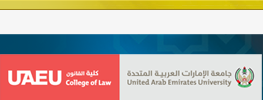Abstract
During the past decades, many changes have occurred in the legal system of patents, protection of pharmaceutical products and methods of manufacturing pharmaceutical products. The World Trade Organization (WTO) and the European Patent Convention (EPC), in 1977, has extended the protection of pharmaceutical products and the method of their manufacturing. The TRIPS Agreement which came into force in 1995, committed its Members to provide protection to all their pharmaceutical products regardless of the field of technology. Thus, pharmaceutical products and methods of manufacturing are now covered by this International Protection Act as well as by their National Legislations. However, this protection by patent was not applied to the second medical indications.
The matter of the second medical indication was raised by the international pharmaceutical companies’ research centers during their research, which showed that the medicines that had originally been patented for their primary use, could now be applied to treat other diseases. Consequently, international pharmaceutical companies pressurized their Governments to further protect these pharmaceutical products by expanding the protection so that it also covers the secondary use of the medications.
Meanwhile, the International companies started to claim protection for the secondary usage by applying the Swiss Model i.e. (use of compound X in the manufacture of medicament of treatment of disorder Y). Recently, these issues were solved when the European Patent Office accepted the amendments of
Article 54 /5 of the EPC which removed the international pharmaceutical companies’ barriers to obtain the protection for new uses of medication in the developing countries. However, this issue has still remained unsolved in the developing countries.
Recommended Citation
Al-Salihi, Kameran Hossen
(2011)
"Protection of Pharmaceutical Products and the second Medical indications In Comparative Legislation and International Conventions,"
UAEU Law Journal: Vol. 2011:
No.
48, Article 1.
Available at:
https://scholarworks.uaeu.ac.ae/sharia_and_law/vol2011/iss48/1

